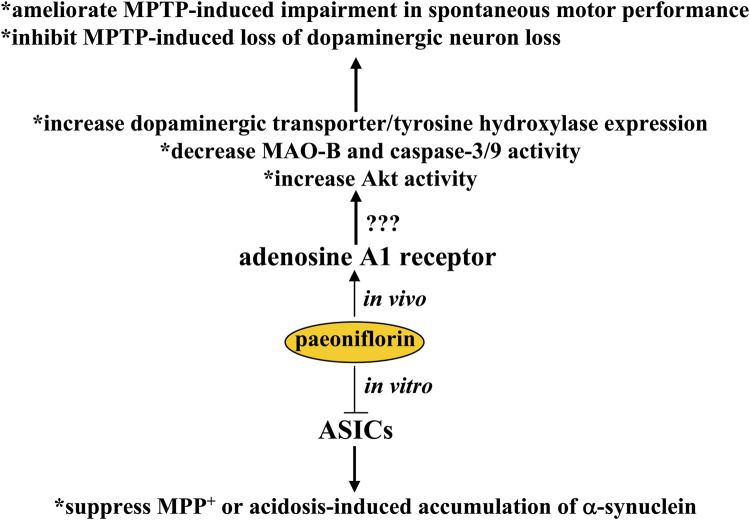FIGURE 4.
Effects and mechanisms of paeoniflorin in Parkinson’s disease. Paeoniflorin administration may ameliorate MPTP-induced impairment of spontaneous motor performance and inhibit MPTP-induced loss of dopaminergic neuron loss by increasing the expression of dopaminergic transporters and tyrosine hydroxylases, decreasing MAO-B and caspase-3/9 activity, or increasing Akt activity via a possible mechanism related to adenosine A1 receptor activation. Under in vitro conditions, paeoniflorin was found to suppress MPP+ or acidosis-induced accumulation of α-synuclein in cultured PC12 cells by inhibiting the activity or expression of ASICs. However, whether this in vitro effect on ASICs could mediate the neuroprotective effect of paeoniflorin in animal models of Parkinson’s disease remains unclear.

